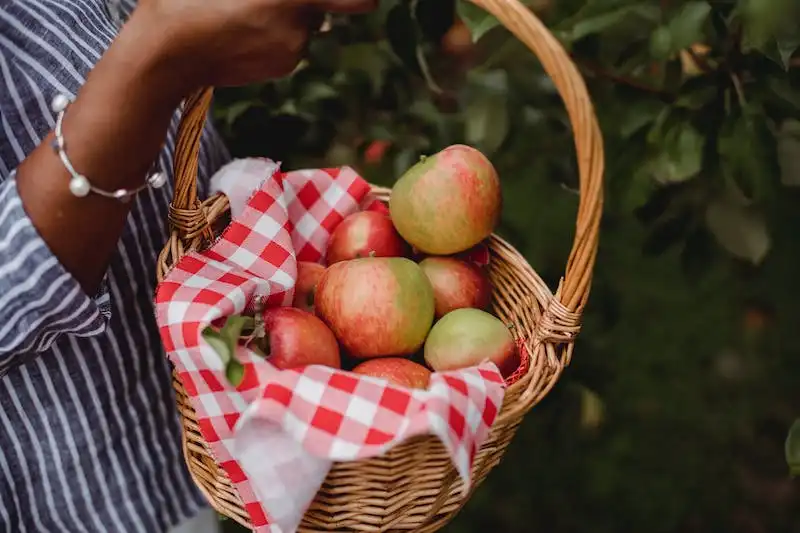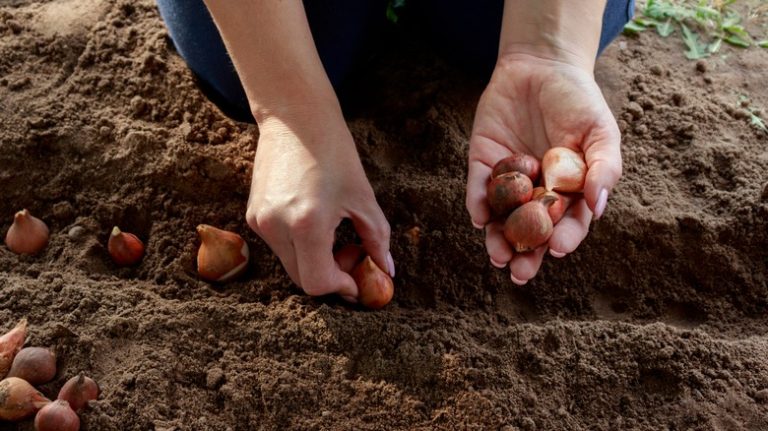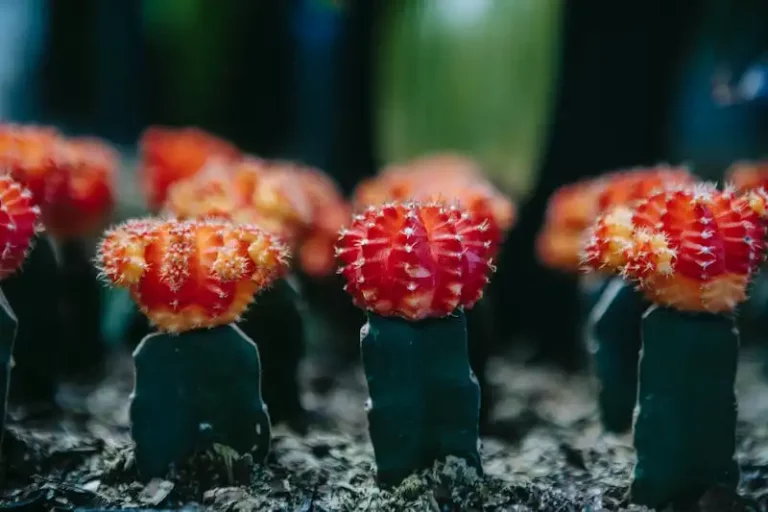Located in a picturesque region, East of Eden Flower Farm is a haven for flower lovers and growers alike. The farm is known for its breathtaking display of blooming flowers and offers a unique experience for visitors to connect with nature. With its commitment to sustainability and organic practices, the farm aims to create a harmonious environment where flowers can thrive.
One of the key techniques used at East of Eden Flower Farm is pre-sprouting, which involves giving bulbs a chance to grow roots and sprouts before planting them in the ground. This process helps ensure that the flowers have a good chance of survival and produce healthy blooms. It also encourages bushier foliage and larger flowers, making for a more vibrant and visually appealing display.
Growers at East of Eden Flower Farm understand the importance of proper bulb storage and fertilizing. They know how to choose the ideal temperature and moisture conditions for storing bulbs. They also know when and how to fertilize the plants to ensure they have all the nutrients they need to thrive.
Another important step in flower management at East of Eden Flower Farm is transplanting. This involves carefully moving the flowers from the potting area to their permanent location in the garden. Proper transplanting techniques help ensure that the flowers continue to grow and flourish in their new environment.
For those who want to learn more about flower growing and management, East of Eden Flower Farm offers helpful tips and FAQs on their website. Whether you are a seasoned flower grower or just starting out, there is something for everyone to learn. So why not visit East of Eden Flower Farm and discover the beauty of flowers in a whole new way?
Dahlias Sprouting: What To Do When It Happens
When dahlias pre-sprout, it is important to take action to ensure their successful growth and production. Potting up the sprouts is a key step that encourages healthy growth and supports their overall development.
Here’s what to do when your dahlias begin to sprout:
- First, carefully separate the sprouts from the tubers. Gently remove them from the tubers, being mindful not to damage the sprouts or the tubers.
- Next, prepare a well-drained potting mix. Fill a pot or container with the potting mix, leaving enough space for the sprouts to grow and develop.
- Place the sprouts in the potting mix, making sure they are positioned with the sprouts pointing up and the tubers connecting with the soil. This will provide them with the necessary support for their growth.
- After potting up the sprouts, water them lightly to moisten the soil. Be careful not to over-water, as this can lead to diseases and rot.
- As the sprouts grow, monitor their progress and make sure to provide them with adequate sunlight and water. Regularly fertilize the plants to promote healthy growth.
- To encourage the production of more blooms, it is recommended to divide the dahlias once they become large enough. Dividing the plants every 3-4 years will help them thrive and continue to produce beautiful flowers.
Dividing dahlias brings several benefits to the plants. It helps prevent overcrowding, allows for better air circulation, and reduces the chance of disease. Additionally, dividing dahlias provides an opportunity to share the plants with other growers or bring them indoors for the winter.
When potting up dahlias or dividing them, it is important to give them enough space to grow. Dahlias typically need about 4-5 feet of space between plants to ensure they have adequate room for their full size. Providing this spacing will allow them to develop healthy root systems and produce abundant blooms.
As sturdy plants, dahlias tend to thrive in well-drained soil. They prefer a sunny location and require regular watering, especially during dry periods. Being responsive to weather conditions, dahlias may require extra water during hot spells and periods of drought.
When it comes to outdoor pests, dahlias usually don’t attract many issues. However, they can be attractive to pollinators, such as bees and butterflies, which can be a benefit to gardeners and farmers alike. It’s important to monitor the plants for any signs of disease or pest infestation and take appropriate action to prevent or address any problems.
Deadheading dahlias is an important practice to extend the blooming period. Removing spent blooms above a set of healthy leaves will encourage the plant to produce more flowers and prolong its display.
In conclusion, dahlias are beautiful flowers that bring color and vibrancy to any garden. Taking care of them from the moment they sprout will lead to successful growth, abundant blooms, and a stunning display of dahlias in your garden.
When To Expect Dahlias Sprouting
Identifying when your dahlias will sprout can be an exciting time for gardeners. Generally, dahlias can start sprouting around 7 to 14 days after they have been planted, depending on various factors.
Dahlias thrive in warm weather, so you can expect them to sprout when the temperature starts to consistently stay above 60°F (15°C). If your dahlias have been planted indoors, you can bring them outside after the danger of frost has passed and the temperature is suitable for their growth.
Transplanting dahlias into the garden can be beneficial because it allows them to interact with pollinators and other beneficial insects. Before transplanting, pay attention to the instructions provided regarding spacing and proper conditions for your specific variety of dahlias.
Here’s where you can keep them: find a spot in your garden where they will receive generous sunlight, preferably 6 hours or more. Dahlias benefit from spacing, so make sure to allocate adequate space between each plant.
If you planted your dahlias in containers instead of directly in the ground, you may need to provide some staking to support the plants as they grow. This is because dahlias tend to grow large and their blooms can be heavy. Regularly stake your dahlias to prevent any damage to the stems or flowers.
When it comes to caring for your dahlias, especially in the early stages, it is essential to water them regularly. Keep the soil moist but not overly saturated. You can mulch around the base of the plants to help retain moisture and prevent weed growth.
To ensure that your dahlias sprout successfully and bring you an abundance of beautiful flowers, remember to provide them with proper feeding. Follow a feeding guide specifically designed for dahlias and apply fertilizer as recommended.
If you are new to growing dahlias, it’s important to know that pre-sprouting can be a helpful step. This involves starting your dahlia tubers in pots indoors a few weeks before the recommended planting time. Pre-sprouting allows you to get a head start on the growing season and can increase your chances of success.
Once your dahlias have sprouted and your garden is starting to thrive, don’t forget to connect with other gardeners to share tips and experiences. You can also learn more about storing dahlias and other helpful advice for future seasons.
So, when should your dahlias sprout? It depends on the variety, weather, and other factors. However, as long as you provide them with the right conditions and care, you will soon see sprouts emerging from the soil and the foliage growing rapidly.
Pre-sprouting Dahlia Tubers
Pre-sprouting dahlia tubers is a great way to get a head start on your plants and ensure healthy growth and abundant blooms. When it comes to growing dahlias, timing is everything. Pre-sprouting tubers allows you to take advantage of the optimum planting time for your zone.
Here are the steps to pre-sprout your dahlias:
- First, identify the tubers you want to pre-sprout. Look for large, healthy tubers with visible eyes.
- Place the tubers in a well-drained container and cover them with moist potting soil or vermiculite. Leave the eyes exposed.
- Keep the container in a warm location, around 70-75°F (21-24°C), with ample light. Avoid direct sunlight.
- Water the tubers regularly, keeping the soil moist but not soggy. Mulch can be added on top to help retain moisture.
- Within two to three weeks, you should start to see visible signs of new growth. At this point, you can transplant the pre-sprouted tubers to individual pots or directly into the ground.
Pre-sprouting tubers has several benefits. It allows you to get a jump start on the growing season and ensure better timing for planting. It also helps to increase production and improve the overall health and vigor of your dahlia plants.
When transplanting the pre-sprouted tubers, make sure to space them adequately, leaving about 2-3 feet (60-90 cm) of space between plants. This will allow for proper air circulation and minimize the risk of disease. Staking and pinching may also be necessary to support the growth and prevent damage from wind or heavy rain.
Watering is crucial during the growing season, especially during hot and dry periods. Dahlias require regular watering to keep their roots hydrated and maintain healthy growth. Using an all-purpose fertilizer can also benefit their overall development and bloom production.
By following these tips and pre-sprouting your dahlia tubers, you can enjoy the most beautiful and bountiful blooms from your East of Eden Flower Farm.
Choose The Right Potting Soil
When it comes to growing plants, choosing the right potting soil is key. The soil you use will have a significant impact on the health and growth of your plants. Here are some tips to help you choose the best potting soil for your East of Eden Flower Farm:
- Choose quality and nutrient-rich soil: Look for potting soil that is specifically formulated for container gardening. These types of soil are usually lighter and more well-draining, which helps prevent waterlogging and root rot. They also contain a good balance of essential nutrients to support plant growth.
- Consider the moisture-holding capacity: Find a potting soil that retains moisture adequately but also drains well. This will help prevent overwatering and ensure that your plants receive enough water without drowning their roots.
- Check the pH level: Different plants prefer different pH levels, so it’s important to choose a potting soil with the right pH for the plants you’re growing. Most plants prefer a slightly acidic to neutral pH range.
- Look for organic options: Organic potting soils are free from synthetic chemicals and pesticides, providing a healthier environment for your plants. They also help promote the growth of beneficial microbes and organisms in the soil.
- Consider nutrient supplementation: Some potting soils come with added fertilizers, while others may require additional fertilizing. If you choose a soil without added nutrients, make sure to regularly fertilize your plants to keep them healthy and thriving.
By following these steps and choosing the right potting soil, you’ll give your plants the best start for successful growth on your East of Eden Flower Farm. Remember to monitor their moisture levels regularly, pinch back any deadhead flowers, and fertilize as needed to ensure your flowers bring beauty to your garden.




